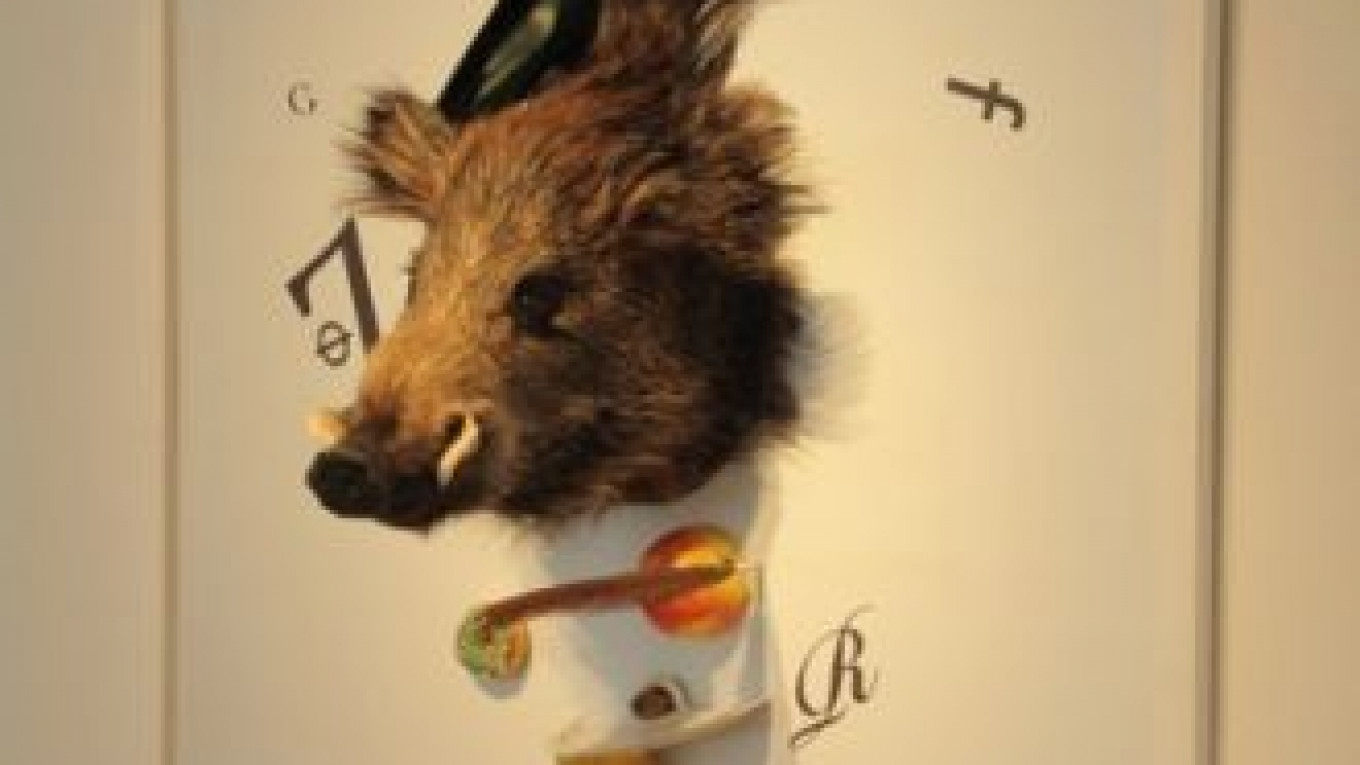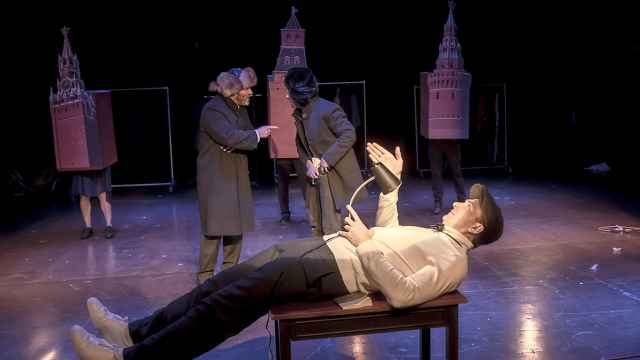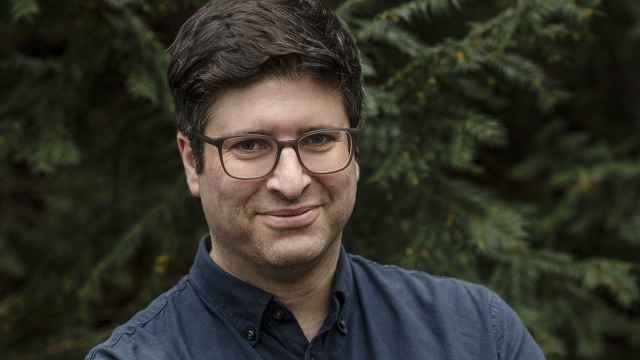Museumgoers befuddled by Kazimir Malevich’s “Black Square,” rejoice: The Moscow Museum of Modern Art has come to the rescue. In its gleefully interactive new exhibition, “If Only I’d Known,” the museum explains the ideas behind contemporary art forms while giving viewers the chance to create them.
Curator Yekaterina Kuzmina describes the project as an “educational, interactive exhibit.” Many people who visit the museum love “traditional forms of art” but “don’t understand the language of modern artists,” she said.
The works on display, which are mostly from the museum’s permanent collection, span the 20th century and showcase a wide variety of modern movements, including video, performance and object installation. Visitors progress through a series of rooms divided by artistic medium. Each room features an explanatory sign contextualizing the works it holds, but perhaps the clearest understanding comes through participation.
“You can try to explain it to him in words, but a person grasps it better if he does it himself,” said Yekaterina Zaitseva, the exhibit’s other curator.
The experience begins with a room dedicated to Malevich’s “Black Square,” the groundbreaking catalyst of the modern art movement and a long-standing source of confusion and irritation among the general public. The room is outfitted as a whimsical classroom, in which portraits of Alexander Pushkin and Leo Tolstoy hang above a blackboard alongside a “Black Square” print and later artists’ interpretations of Malevich’s creation fill the walls. At desks, children can play with red and black blocks and color in (or outside) square outlines on sheets of paper. Adults can find writings about the work’s theoretical underpinnings stashed in school folders.
The “tradition” hall then proceeds to destroy the aura of sanctity surrounding famous masterpieces. (For example, a pink, green and silver sculpture provides an exuberant interpretation of Mona Lisa’s smile.)
Through the rest of the exhibit, gallery rooms alternate with “studio space,” where visitors can take a stab at creating their own versions of the works they have just seen. For example, a “media art” room is followed by a studio filled with computers, with which visitors make drawings that are then projected onto the walls. (They can also vote on their peers’ creations; the favorites will appear on the museum’s web site). Some featured artworks are also interactive, such as Vladislav Yefimov’s “Comutation,” in which viewers can manipulate the image of a man on a screen.
“We wanted something accessible to parents, kids and the younger generation so they could come explore, participate for themselves and really … have a good experience,” said Vasili Tsereli, the museum’s director. Beyond the abundant opportunities for coloring, performing and appearing on video monitors, more theoretically minded young visitors can read child-friendly versions of the placards in each room.
In the last room, visitors stand at a lectern and push buttons that cast light on various pieces of artwork, such as a stuffed giraffe resting peacefully on a ripped-open section of a gray oil painting. They can also play recorded lectures about the evolution of art in the 20th century.
Alexei Tregubov, a member of the “Only Brothers” art group and the exhibition’s head designer, thinks the “most fun” room is the studio brimming with magnets shaped like buckets of fried chicken, rubber ducks and other everyday objects, which visitors can move around to create their own object installations.
Tregubov said the exhibit’s participatory experience opens up modern art to all ages, languages and levels of artistic knowledge.
“Anyone can press a button,” he said. “You just need to be daring enough to do it.”
“If Only I’d Known” runs through May 29 at the Moscow Museum of Modern Art, located at 25 Ulitsa Petrovka. Metro Chekhovskaya. Tel. 694-6660, www.mmoma.ru.
A Message from The Moscow Times:
Dear readers,
We are facing unprecedented challenges. Russia's Prosecutor General's Office has designated The Moscow Times as an "undesirable" organization, criminalizing our work and putting our staff at risk of prosecution. This follows our earlier unjust labeling as a "foreign agent."
These actions are direct attempts to silence independent journalism in Russia. The authorities claim our work "discredits the decisions of the Russian leadership." We see things differently: we strive to provide accurate, unbiased reporting on Russia.
We, the journalists of The Moscow Times, refuse to be silenced. But to continue our work, we need your help.
Your support, no matter how small, makes a world of difference. If you can, please support us monthly starting from just $2. It's quick to set up, and every contribution makes a significant impact.
By supporting The Moscow Times, you're defending open, independent journalism in the face of repression. Thank you for standing with us.
Remind me later.






